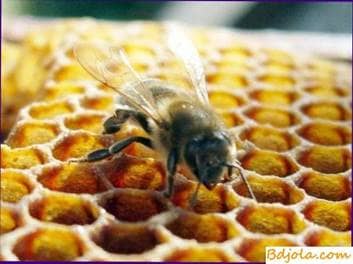
Top-dressing honey bees is widely used in the spring-autumn season. At this time, from the nests are removed extra, subject to the culling of the frame. They are printed out and in the evening they are put in nests for middle and strong families. Frames with honey for feeding bees into the nest are placed from the edge or the second from the edge or behind the diaphragm. Sometimes in open cells, where the knife blade has not touched, bees do not take honey. Such a framework for their complete release from honey is hung in greenhouses, and the honey is quickly taken away by honey bees.
The honey crystallized in the honeycombs is opened and warm water is poured into the free cells of this or a neighboring honeycomb. Soon the honey will be diluted and transferred to the nest.
There are times when honey is sour. In no case can not fix fermented honey boiling. When boiling, fruit sugar, the melting point of which is 95 њ C, is caramelized. Caramelized honey for bees is more dangerous than padem.
There are also cases when in wintering bee colonies, especially on extended nests, unprinted honey is diluted. The framework with such honey should be removed and put into the nests of strong greenhouse families without delay. If this is not done, then at temperatures above 10 њ C different types of yeast, which are found in honey and in the air, will quickly develop, resulting in fermentation, or souring, of honey.
Fermented honey for bees is harmful, and it can not be fed to them. To correct the fermented honey it is possible to warm the honey at a temperature of 62.5 њ C for 30 minutes. At the same time, the quality of honey is deteriorating both in the activity of enzymes, and in taste and color.
Барометр домашний. Мед для желчного пузыря.
Hothouse beekeeping